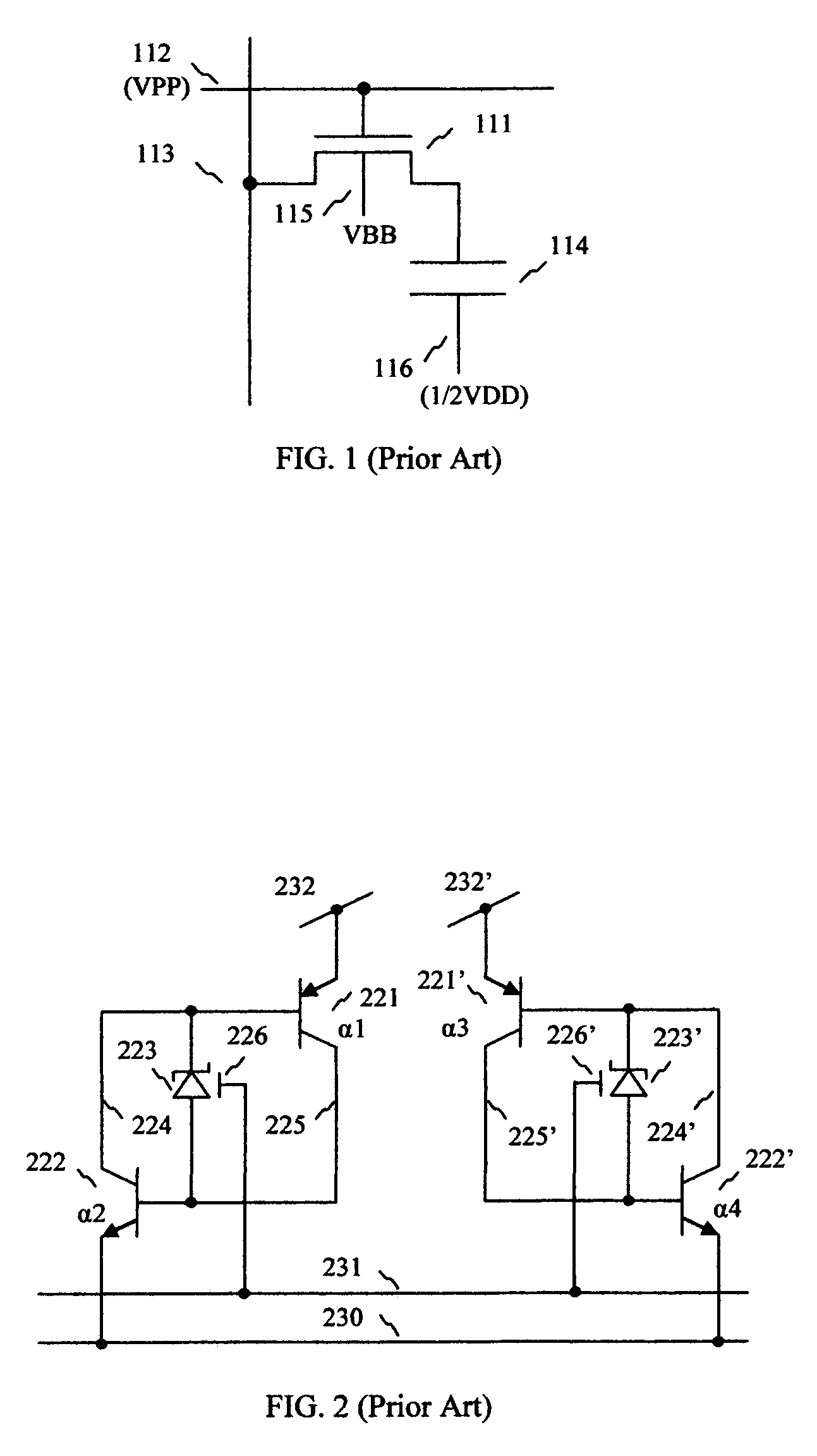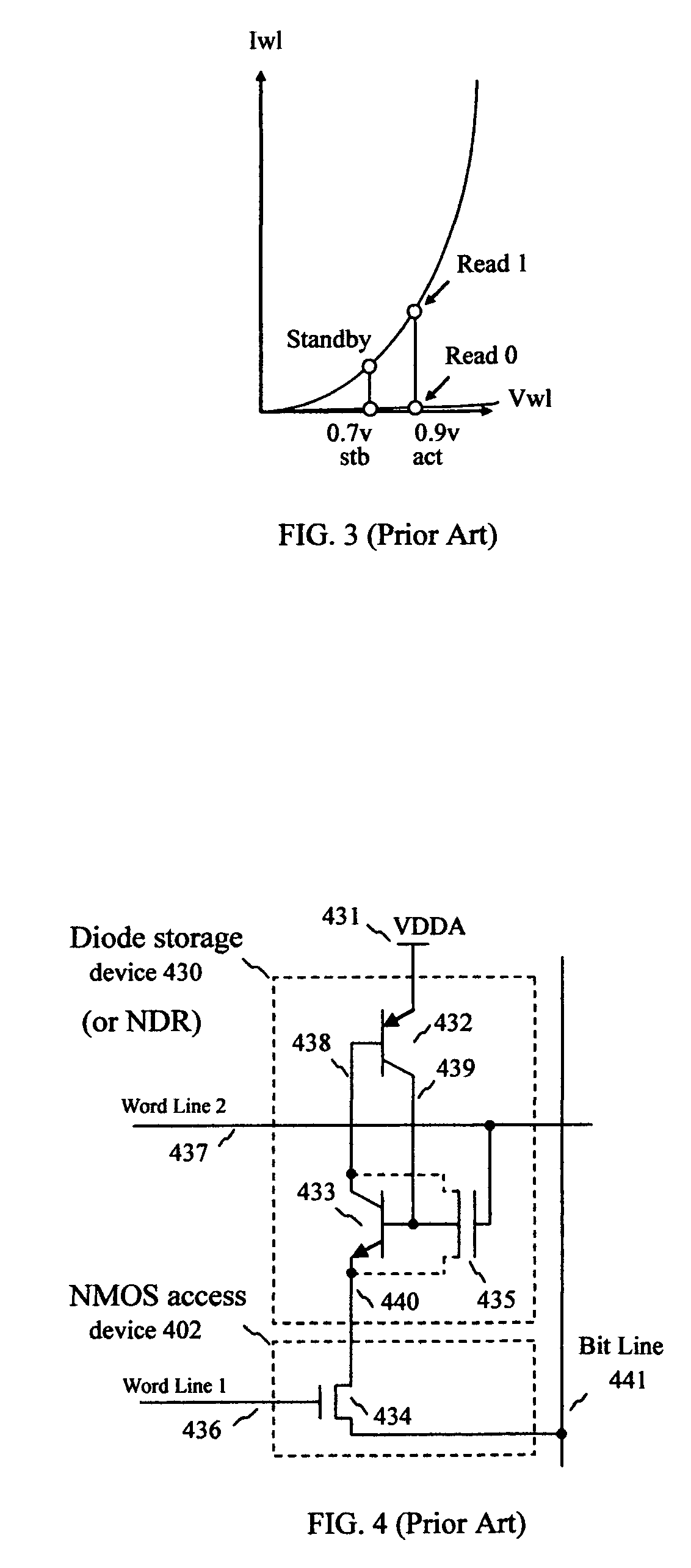Planar capacitor memory cell and its applications
a capacitor memory cell and capacitor technology, applied in the field of random access memory, can solve the problems of increasing die area, consuming more power of generators, and difficulty in obtaining necessary capacitance, and achieve the effects of less complicated fabrication, high current gain, and high performan
- Summary
- Abstract
- Description
- Claims
- Application Information
AI Technical Summary
Benefits of technology
Problems solved by technology
Method used
Image
Examples
Embodiment Construction
[0037]The present invention is directed to random access memory, which stores data in a storage capacitor. In FIG. 7, the present invention of memory cell 700 is shown. The plate 762 only couples to base 752 which forms a storage capacitor 751, wherein the plate shunt 764 is added to reduce resistance of the plate 762. Generally, four-terminal diode (p-n-p-n diode, known as Shockley diode) is described as a p-n-p transistor and an n-p-n transistor which form a feedback loop. Once turned on, p-n-p-n diode will remain on conducting state with the feedback loop, as long as there is a significant current flowing through it. However, in the capacitor memory applications, one of two transistors is simplified as a p-n diode to remove feedback loop because the storage capacitor effectively controls the base of p-n-p transistor with the stored charge, while there is no storage capacitor in the base of n-p-n transistor. Hence, n-p-n transistor is replaced with a p-n junction. If storage node ...
PUM
 Login to View More
Login to View More Abstract
Description
Claims
Application Information
 Login to View More
Login to View More - R&D
- Intellectual Property
- Life Sciences
- Materials
- Tech Scout
- Unparalleled Data Quality
- Higher Quality Content
- 60% Fewer Hallucinations
Browse by: Latest US Patents, China's latest patents, Technical Efficacy Thesaurus, Application Domain, Technology Topic, Popular Technical Reports.
© 2025 PatSnap. All rights reserved.Legal|Privacy policy|Modern Slavery Act Transparency Statement|Sitemap|About US| Contact US: help@patsnap.com



